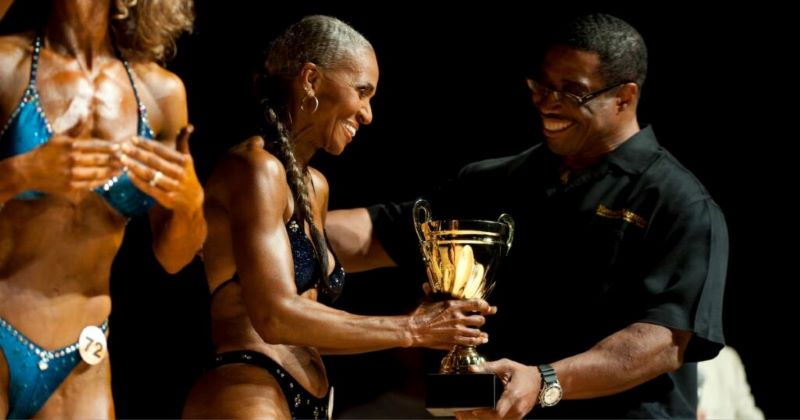Ernestine Harvin Campbell, known primarily as the former wife of rock and roll pioneer Little Richard, played a significant yet often understated role in the life of this musical icon. Born on October 31, 1935, in Washington, D.C., she lived a life that intertwined with the music industry and the complexities of celebrity relationships.
Early Life and Background
Information about Ernestine Harvin Campbell’s early life remains largely private, reflecting a tendency to stay away from the limelight. Raised in Washington, D.C., she worked as a secretary before meeting one of rock music’s most vibrant stars.
However, the influences and values from her upbringing and family background have not been publicly documented, leaving a mysterious veil over her formative years.
Meeting Little Richard
The fateful meeting between Ernestine and Richard Wayne Penniman, better known as Little Richard, occurred in October 1957 at an evangelical rally in California.
Richard, already making waves in the music scene with hits like “Tutti Frutti” and “Long Tall Sally,” captivated audiences with music and his dynamic stage presence. The couple began dating shortly after their initial encounter, culminating in a marriage on July 12, 1959.
Source: https://suportrevup.com/
Marriage and Challenges
During the five years of marriage, the couple faced significant challenges that many celebrity relationships encountered. While sharing moments of joy, including a mutual love for music and performance, the overwhelming nature of Richard’s fame posed strains.
Ernestine Harvin Campbell preferred a more private lifestyle, making the spotlight difficult to bear. This disparity in preferences eventually led to their separation in 1964.
The divorce was fraught with complications; Ernestine attributed the split to Richard’s celebrity lifestyle, which she found challenging. In contrast, Richard suggested that neglect and personal struggles related to his sexuality played a crucial role.
Both parties later denied claims about Richard’s sexuality, suggesting a complex interplay of identity and societal expectations that may have influenced their relationship.
Life After Divorce
Following the divorce, both individuals carved new paths for themselves. Although neither had children together, Richard adopted a son, Danny Jones Penniman, in 1984 after the death of the boy’s father.
Danny grew up closely with Richard, often accompanying him during performances and serving in various capacities, including as a bodyguard.
Ernestine remarried McDonald Campbell on March 23, 1975, adopting another identity while maintaining a low profile. The details of her life during this period are not widely known, further emphasizing her desire for privacy.
Her Legacy and Death
Ernestine Harvin Campbell passed away on May 9, 2010, at the age of 74. While the cause of death has not been publicly disclosed, it marked the end of an era connected to one of the most influential figures in rock and roll history.
Her legacy lies not only in her connection to Little Richard but also in navigating a relationship in the glaring public eye while striving for personal privacy.
Reflection on a Complex Relationship
The relationship between Ernestine and Richard provides insights into the challenges and dynamics of marriage amidst fame. Little Richard openly expressed his struggles with identity, sexuality, and fame, while experiences shed light on the emotional toll that being a partner to a celebrity can take.
Their story reminds them of the human complexities behind celebrity relationships and the often-unseen struggles accompanying public admiration.
In retrospect, Ernestine Harvin Campbell’s life reflects a personal journey and a shared narrative with one of music’s greats.
Despite her preference for obscurity, her impact can still be recognized in the wider context of rock and roll history through the life of an artist who changed the musical landscape and through the quiet strength displayed in her enduring presence alongside him.
Conclusion
While Ernestine Harvin Campbell may not be as widely recognized as her former husband, her life intertwines with significant moments in music history. The essence of her journey, marked by love, challenges, and personal growth, continues to resonate with those who appreciate the nuanced stories that make up the vibrant tapestry of the entertainment world.

Welcome to the world of Chef Gary! Meet Chef Gary, a culinary maestro whose journey from Indonesia to the United States has been nothing short of extraordinary. Immigrating in the early 2000s, Chef Gary began his culinary career as a Sushi Chef at renowned establishments such as Japonais Restaurant in Chicago, followed by stints at Benihana and Ginza in Indiana.
With a passion for perfection and a dedication to his craft, Chef Gary’s career blossomed as he made his mark in the Sunshine State, serving as the Head Sushi Chef at Modern Asian restaurants in Palm Beach. However, his two-year sojourn in New Delhi, India, shaped his culinary prowess, propelling him to the prestigious role of Executive Chef at Nehru Place – Benihana.

